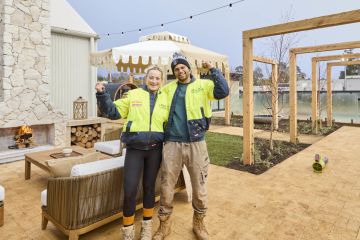Considering multigenerational living in Canberra? Here's what to consider

A rise in multigenerational living driven by the ageing population and deteriorating housing affordability is fuelling demand for large properties, as more buyers seek sizeable homes for extended families.
And with societal changes caused by the pandemic accelerating the trend, experts say the need for suitable homes is set to increase.
Why live together?
Multigenerational living – at least two generations of adults living at a single property – is commonly seen when ageing parents move in with adult offspring.
“We’ve seen a shift away from institutional aged care and even retirement living,” says demographer Mark McCrindle.
“Older Australians are remaining active later and they want independence longer. They don’t want to be sectioned off from the community.”
Other forms of multigenerational living include live-in grandparents assuming childcare responsibilities in dual-income families, and adult children returning to the family home after living independently, often to save money to purchase their own home.
McCrindle says deteriorating housing affordability and delayed family formation are key factors driving multigenerational households.
“Young people are marrying later, starting careers later, and having children later,” he says. “They’re not creating their own family unit, so staying with the parents longer is the norm.”
What is a secondary residence?
Real estate agent Brett Hayman of Hayman Partners says most buyers of multigenerational homes seek properties with self-contained accommodation for older parents.
“We’re definitely seeing three generations – elderly parents, adult children, and their kids – living together,” he says. “Aged-care facilities are very expensive, and with what’s happening with COVID, some families want loved ones to be closer.”

Secondary residences, also known as granny flats, are a common way home owners develop properties for multigenerational living.
Construction costs typically range from about $120,000 for a one-bedroom free-standing granny flat to about $200,000 for two bedrooms.
Modern well-appointed granny flats almost resemble modest houses, and there are even modular, flat-packed units that are manufactured off-site, then assembled on-site in days.
In the ACT, secondary residences must have a gross floor space of at least 40 square metres and can’t be larger than 90 square metres. Lots need to be at least 500 square metres.
In NSW, the minimum lot size is 450 square metres and the maximum dwelling size is 60 square metres.
Attached or free-standing?
Secondary residences can be attached or free-standing, but each residence must have a separate entrance and private open space.
Although free-standing granny flats may offer additional privacy, Hayman says most buyers of multigenerational homes prefer properties with all the accommodation under one roof.
“It depends on the family, but generally speaking they love it to be one interconnected home with multiple living areas and segregated bedrooms.”
“They want the kitchen to be the hub of the home but want their own independent living, ideally a separate self-contained flat.”
Many volume home builders now offer flexible dual living designs that seamlessly incorporate a secondary residence, pitched as much at investors seeking rental income as families seeking space.
Granny flats and large houses aren’t the only options for multigenerational living. Dual occupancies, also known as duplexes, may be possible for property owners seeking to develop blocks of at least 800 square metres, and for some opportunistic families, purchasing the home next door isn’t out of the question, should it ever hit the market.
McCrindle expects multigenerational living to become more entrenched in society, especially with members of the Gen Z cohort from dual-income families now accustomed to multigenerational living themselves.
“We have an emerging generation who want and value the impact of their elders,” he says. “We’re such a stratified society based on age, that to actually have an opportunity to connect across the generations is a valuable one.”
We thought you might like
States
Capital Cities
Capital Cities - Rentals
Popular Areas
Allhomes
More







